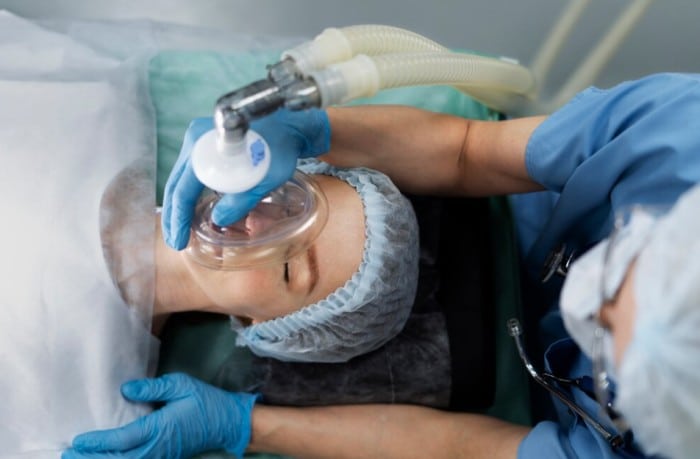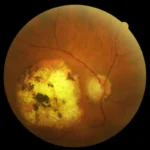Conscious sedation is a highly effective method of ensuring patient comfort and safety during medical and dental procedures. It involves the use of sedative drugs to help patients relax while maintaining full awareness and the ability to respond to instructions. This article delves deep into conscious sedation, exploring its types, benefits, risks, and the overall procedure involved, offering a complete understanding of this essential medical practice.

What is Conscious Sedation?
Conscious sedation refers to the practice of administering sedative medications to a patient to reduce anxiety and discomfort during a medical or dental procedure. Unlike general anesthesia, conscious sedation allows the patient to remain awake and responsive, but deeply relaxed. It’s typically used for procedures that are minimally invasive or require the patient to remain still but do not necessitate complete unconsciousness.
Patients undergoing conscious sedation generally feel calm and at ease, often with little to no memory of the procedure afterward. Sedative medications may be administered through oral pills, inhaled gases, or intravenous (IV) injections, depending on the nature of the procedure and the patient’s needs.
How Does Conscious Sedation Work?
Conscious sedation works by using medications that affect the central nervous system, reducing anxiety and dulling the sensation of pain without causing full unconsciousness. The sedative drugs primarily work by slowing brain activity, promoting a state of relaxation and tranquility.
In most cases, patients remain awake and can follow simple commands, but they may feel drowsy or experience partial amnesia, meaning they may not remember the procedure afterward. The type of sedation used will depend on the procedure, the patient’s medical history, and their level of anxiety or fear.
Types of Conscious Sedation
1. Oral Sedation
Oral sedation is one of the simplest and most common forms of conscious sedation. In this method, patients take a sedative medication in pill or liquid form before the procedure. The medication typically induces mild to moderate sedation, depending on the dosage, and begins to take effect within 30 to 60 minutes.
This type of sedation is ideal for patients who have mild anxiety about procedures or for less invasive treatments. However, the level of sedation may vary, and in some cases, additional sedation may be required during the procedure.
2. Nitrous Oxide Sedation (Laughing Gas)
Nitrous oxide, commonly known as laughing gas, is a popular form of conscious sedation used in dentistry. The gas is inhaled through a mask, and within minutes, it takes effect, inducing feelings of euphoria, relaxation, and calmness. Nitrous oxide works by altering the levels of oxygen and nitrogen in the blood, helping to reduce pain and anxiety.
One of the significant advantages of nitrous oxide sedation is that it wears off quickly once the mask is removed, allowing patients to resume normal activities shortly after their procedure.
3. Intravenous (IV) Sedation
Intravenous sedation involves administering sedative medications directly into the bloodstream through an IV. This method provides a deeper level of sedation than oral sedation or nitrous oxide. IV sedation is commonly used in more complex procedures or for patients with higher levels of anxiety.
IV sedation allows for more precise control over the depth of sedation, as the dosage can be adjusted in real-time during the procedure. This method may induce a moderate level of sedation, where patients may drift in and out of consciousness but remain responsive to commands.
Benefits of Conscious Sedation
Conscious sedation offers numerous advantages for both patients and healthcare providers. Some of the key benefits include:
1. Reduced Anxiety and Fear
One of the most significant benefits of conscious sedation is its ability to alleviate anxiety and fear associated with medical and dental procedures. For patients with dental phobia or those undergoing invasive treatments, sedation provides a sense of calm and relaxation, making the experience more tolerable.
2. Enhanced Comfort During Procedures
Sedation medications help to minimize discomfort during procedures. Whether through reduced pain sensitivity or induced relaxation, patients are often more comfortable, which can improve their overall experience.
3. Faster Recovery
Unlike general anesthesia, which can require extended recovery time, conscious sedation allows patients to recover quickly. Patients often feel alert and able to resume their normal activities within a short period after the procedure.
4. Increased Cooperation
Since conscious sedation keeps patients relaxed but responsive, they are more likely to cooperate during the procedure. This is especially helpful in dental procedures or medical treatments that require patients to remain still for extended periods.
5. Reduced Memory of the Procedure
Patients who undergo conscious sedation often experience partial or complete amnesia of the procedure. This means they are less likely to remember any discomfort or anxiety associated with the procedure, helping to reduce future apprehensions.
Risks and Side Effects of Conscious Sedation
Although conscious sedation is generally considered safe, like any medical procedure, it does come with certain risks. These risks are typically minimal when the sedation is administered by trained professionals, but it’s essential for patients to be aware of potential side effects:
1. Nausea and Vomiting
Some patients may experience nausea or vomiting after sedation, particularly with oral sedation or IV sedation. This side effect can typically be managed with anti-nausea medications.
2. Dizziness and Lightheadedness
It’s common for patients to feel lightheaded or dizzy after a procedure involving conscious sedation. These symptoms usually resolve within a short period, but patients should avoid driving or operating heavy machinery immediately after the procedure.
3. Allergic Reactions
In rare cases, patients may have an allergic reaction to the sedative medications used. This can range from mild symptoms, like a rash, to more severe reactions, such as difficulty breathing. An allergy test may be recommended before using certain medications.
4. Respiratory Issues
In some cases, conscious sedation can lead to slowed breathing or shallow breathing, particularly when high doses of sedatives are used. Healthcare professionals closely monitor the patient’s vitals to ensure that breathing remains steady throughout the procedure.
The Procedure: What to Expect
Before the Procedure
Before undergoing conscious sedation, patients will have an initial consultation where they discuss their medical history, any allergies, and the procedure itself. The healthcare provider will determine the best type of sedation based on these factors.
For oral sedation or nitrous oxide, the patient will be asked to refrain from eating or drinking for several hours prior to the procedure. For IV sedation, the patient may need to avoid food or liquids for up to 12 hours.
During the Procedure
Once the sedative medication is administered, the patient will gradually enter a relaxed state. Depending on the type of sedation, the patient may still be awake, but in a calm and comfortable state, allowing the medical professional to perform the necessary procedure.
After the Procedure
After the procedure, patients are monitored for any adverse effects of the sedation. Recovery time depends on the type of sedation used. For example, patients who have received nitrous oxide may resume their normal activities almost immediately, while those who received IV sedation may require more time to recover.

